My time as a NINO Student Research Assistant has been an enriching and informative experience, providing me with the opportunity and resources to develop as an independent scholar. The aim of my assistantship was to record and research the collections of Islamic Hand-Made Painted (HMP) pottery stored within the Faculty of Archaeology’s archive at Leiden University. This assistantship assessed how ceramics, like the HMP from the Faculty’s depot, could be integrated into future research projects, teaching, and museum exhibits.
The highlight of my assistantship was attending the NINO Annual Meeting on 30th January 2020. I presented in the Lightning Session, it was my pleasure to share my enthusiasm for this project with those who attended, and I had valuable discussions with other scholars about the depot and my assistantship. Of course, at the time, we did not know that in a matter of weeks our lives would be turned upside down by the COVID-19 pandemic. Like many others, the progress of this project was slowed by not having access to the depot and my material.
Despite a myriad of setbacks, there have been some important outcomes from this assistantship. It was always the intention that my assistantship research would directly feed into my RMA thesis. My thesis research was focused on the HMP pottery from the site of Tell Abu Gourdan in present-day Jordan, a village dated to between the Umayyad (661-750 A.D) to Mamluk (1263-1516 A.D.) period. The site was excavated in 1967 as part of the Deir ʻAllā Expedition directed by Prof. dr. Franken. This research was the focus of an important book written by Henk Franken and Jan Kalsbeek in 1975: “Potters of a Medieval Village in the Jordan Valley Excavations at Tell deir ʻAllā: a medieval tell, Tell Abu Gourdan, Jordan”. This book was an early attempt to develop a technological approach to ceramics, combining an analysis of the traces on the surface of the ceramics, with Jan Kalbeek’s knowledge as an experienced potter. 
In my thesis, I have devised a chaîne opératoire approach specifically for ceramics that are part of legacy and archived collections, to test Franken and Kalsbeek’s (1975) original conclusions. Having access to collections from other sites through my assistantship including pottery from Tell Abu Sarbut, has allowed me to test my framework of analysis on other assemblages. This has been a powerful tool, helping me to refine my methods and thinking. In the near future, I want to publish my findings with the hope that my research can help others who want to fully utilise ceramic legacy collections within their own studies.
I was also able to contact a number of people who had connections to past excavations, from which the material in the depot originated. I have to thank Prof. van der Kooji for providing me with copies of the records from the excavations at Tell Abu Gourdan, many of which had not previously been scanned digitally. Discussions are ongoing about how to best archive these documents; it is great to know that these records once thought to be lost, still survive.
I would also like to thank my supervisor Prof. Vroom for their help during my assistantship. Luckily, we were able to locate a number of complete Islamic Hand-Made Painted pots stored within the Faculty. These pots are now being displayed at the RMO, as part of the current “Sweet Tooth: The Journey of Sugar from East to West” museum exhibition. I would also like to extend my gratitude to “The Innovating Teaching Through 3D Scanning Project”, and their technician Ally Walsh who scanned a number of HMP sherds from the depot for use during classroom teaching. Of course, I would also like to thank Dr. Waal for their support, as well as the other staff at the NINO for making my assistantship a fulfilling experience.
Journey of Sugar from East to West” museum exhibition. I would also like to extend my gratitude to “The Innovating Teaching Through 3D Scanning Project”, and their technician Ally Walsh who scanned a number of HMP sherds from the depot for use during classroom teaching. Of course, I would also like to thank Dr. Waal for their support, as well as the other staff at the NINO for making my assistantship a fulfilling experience.
